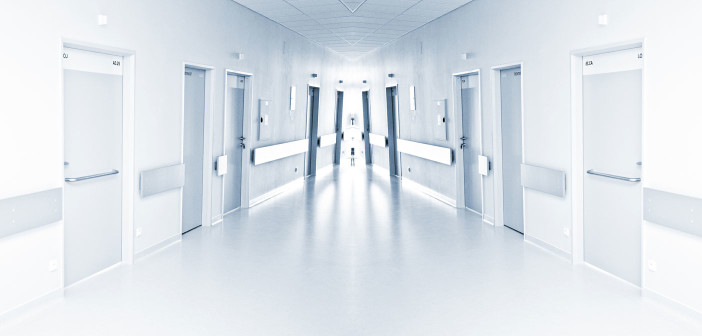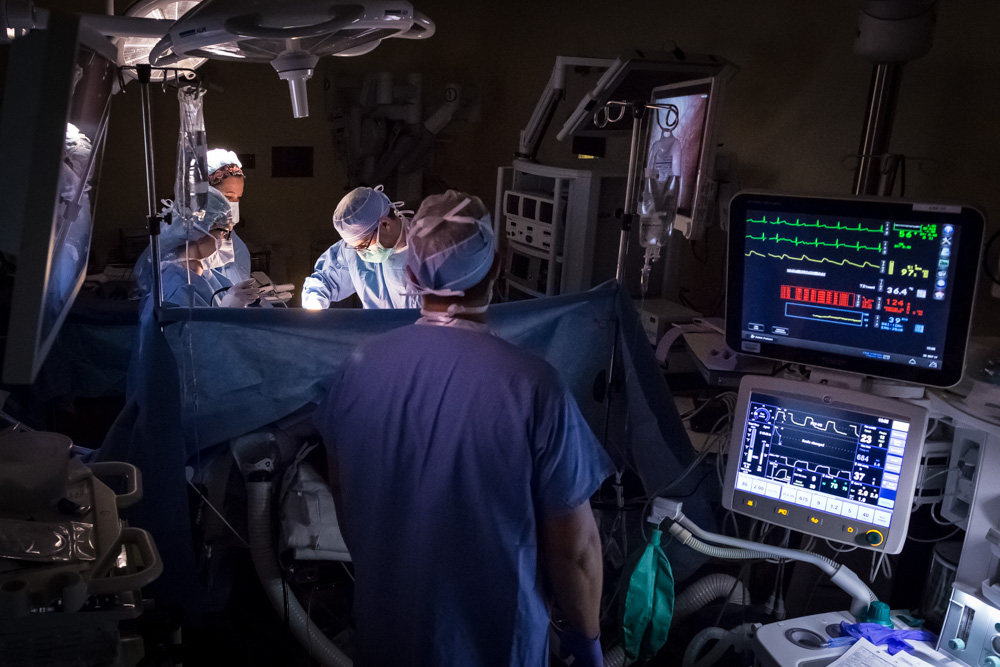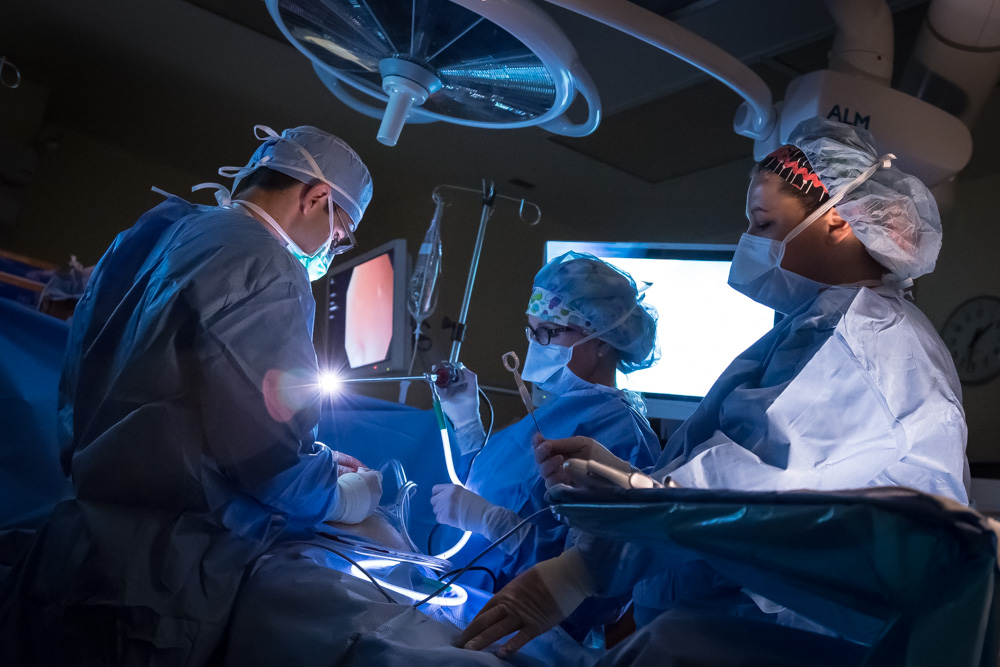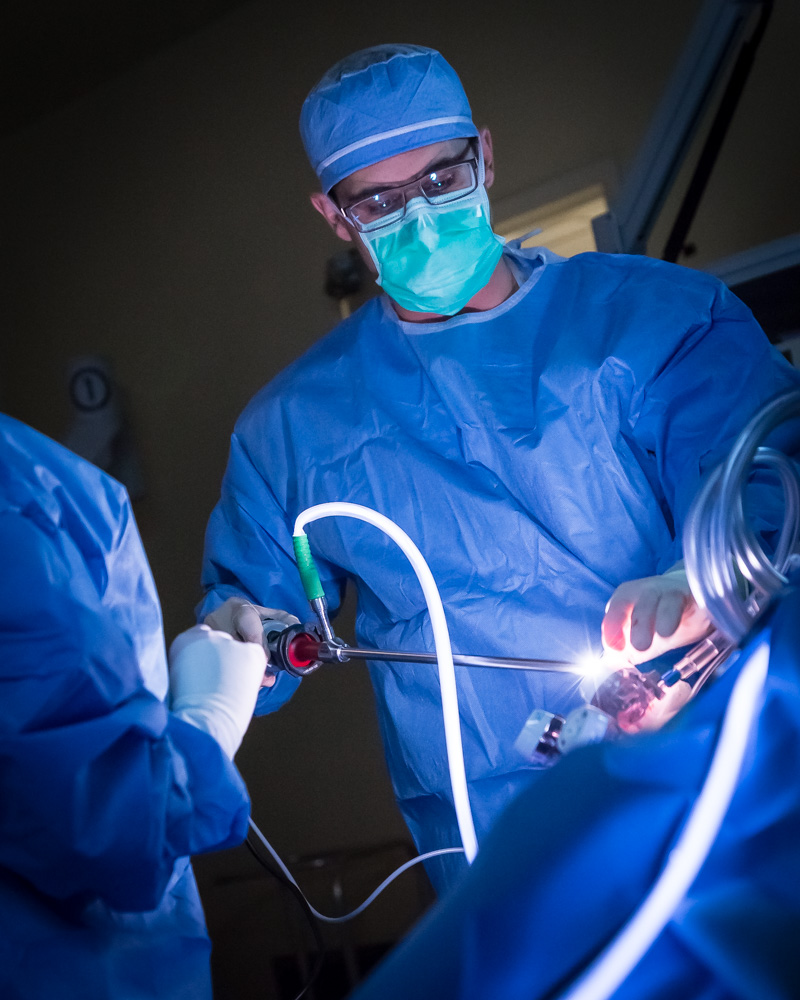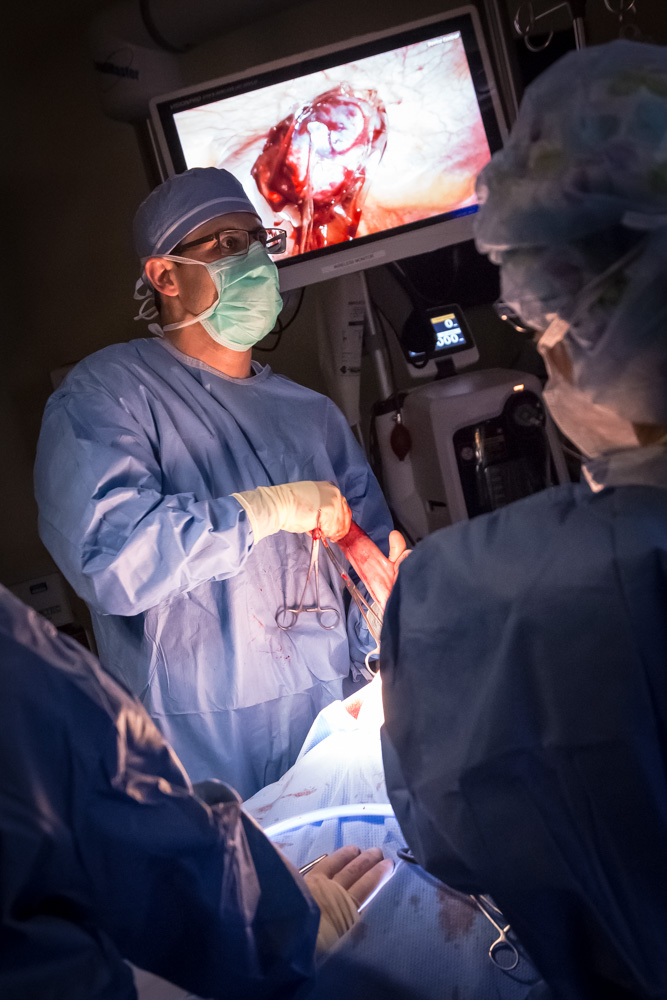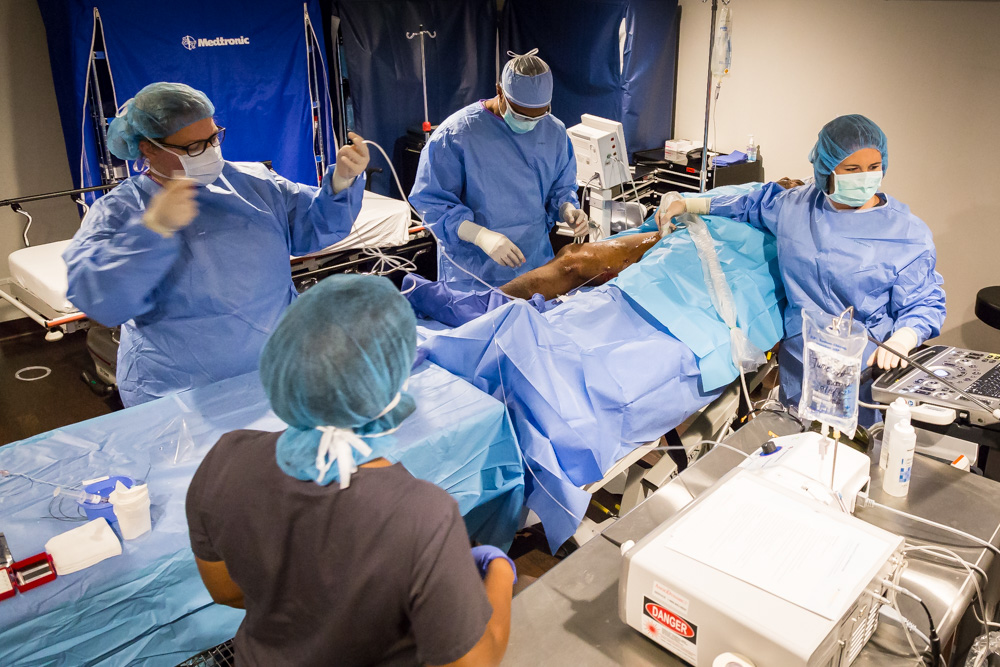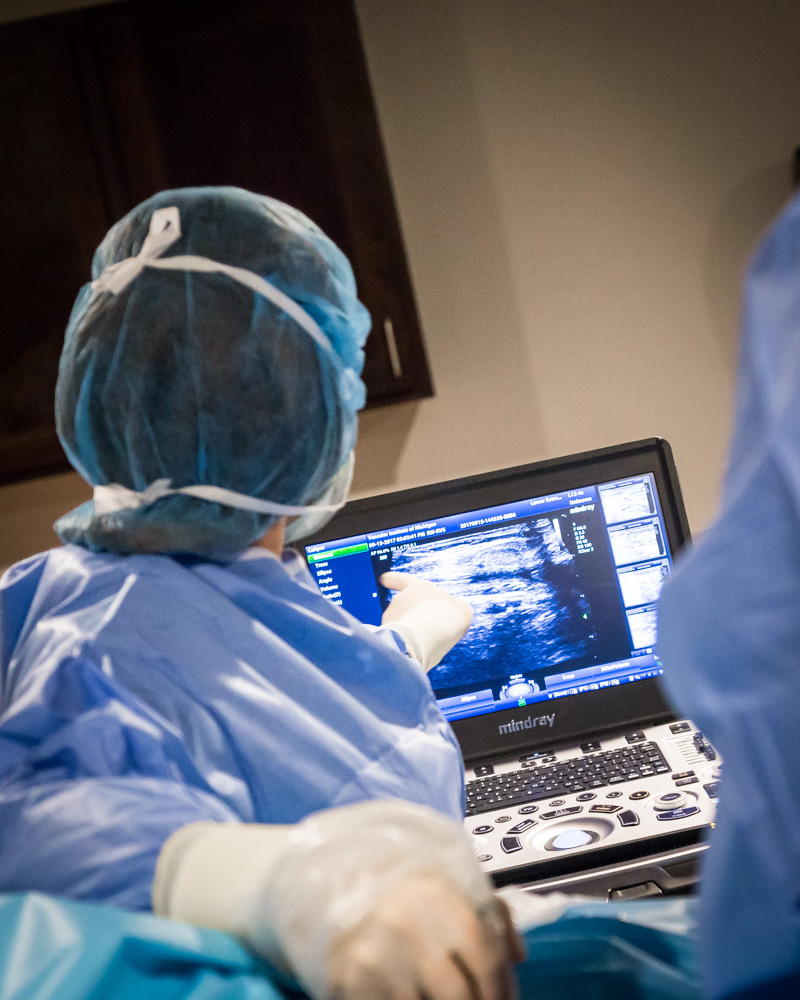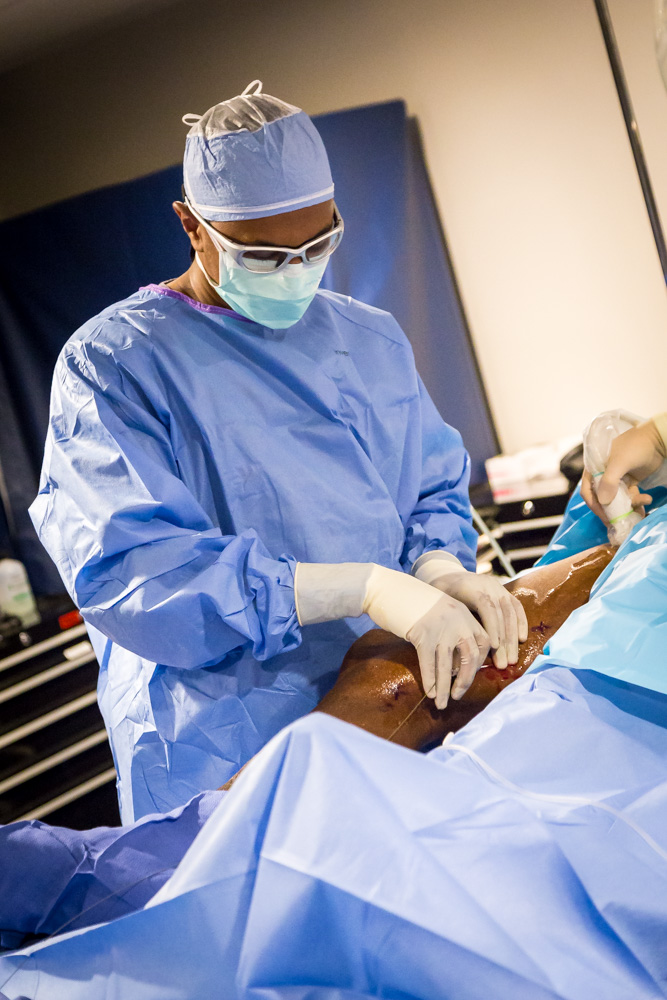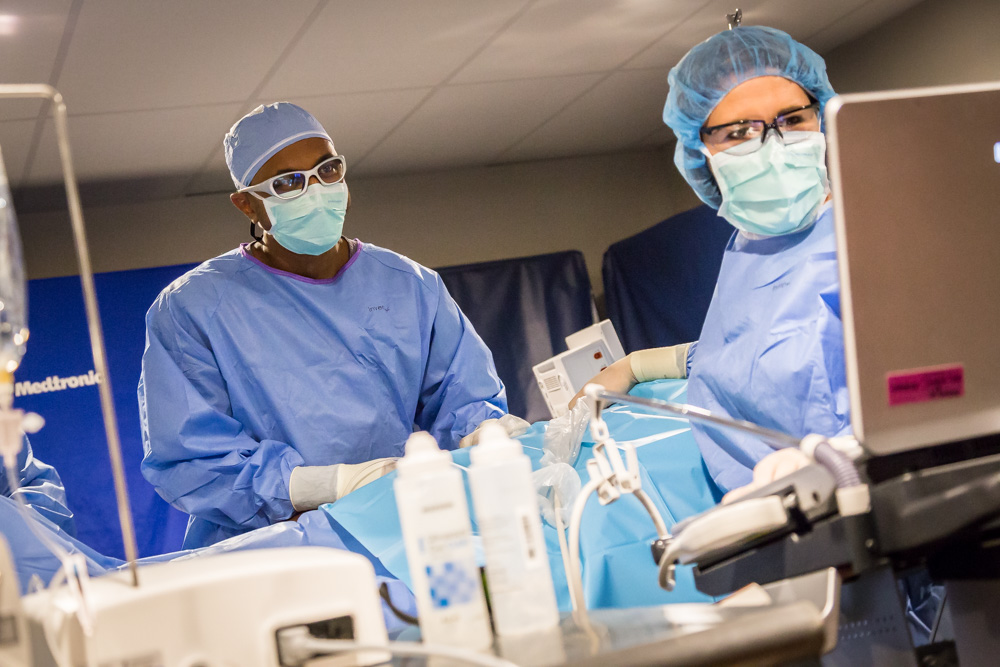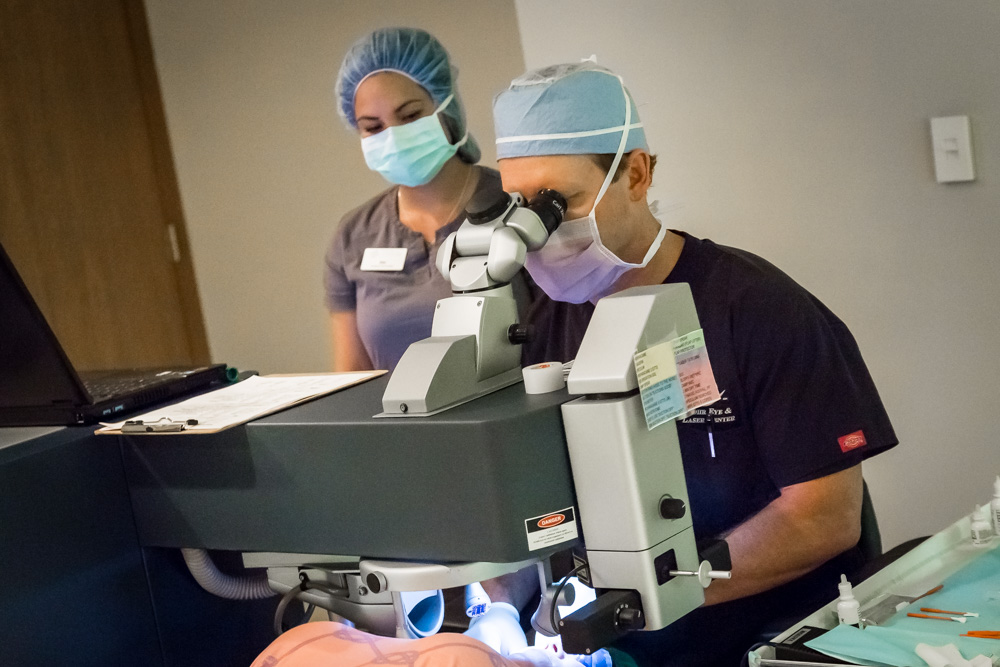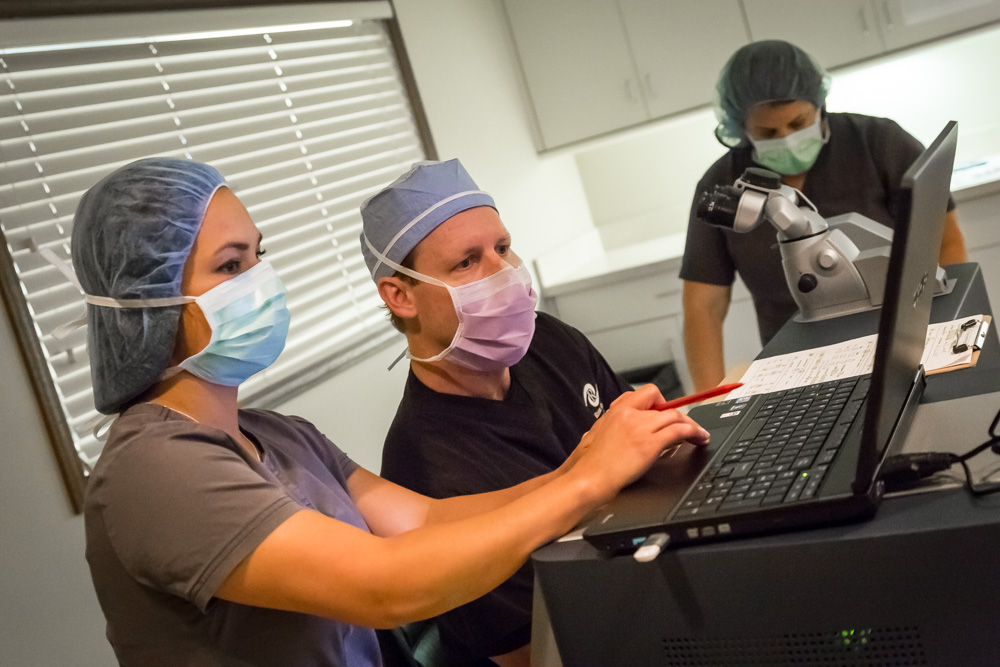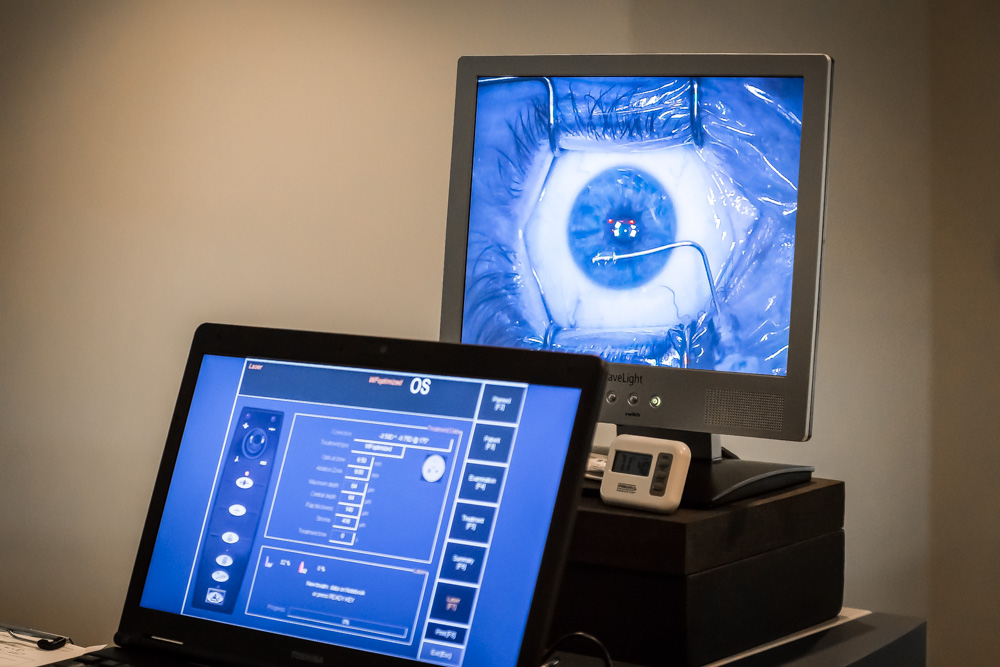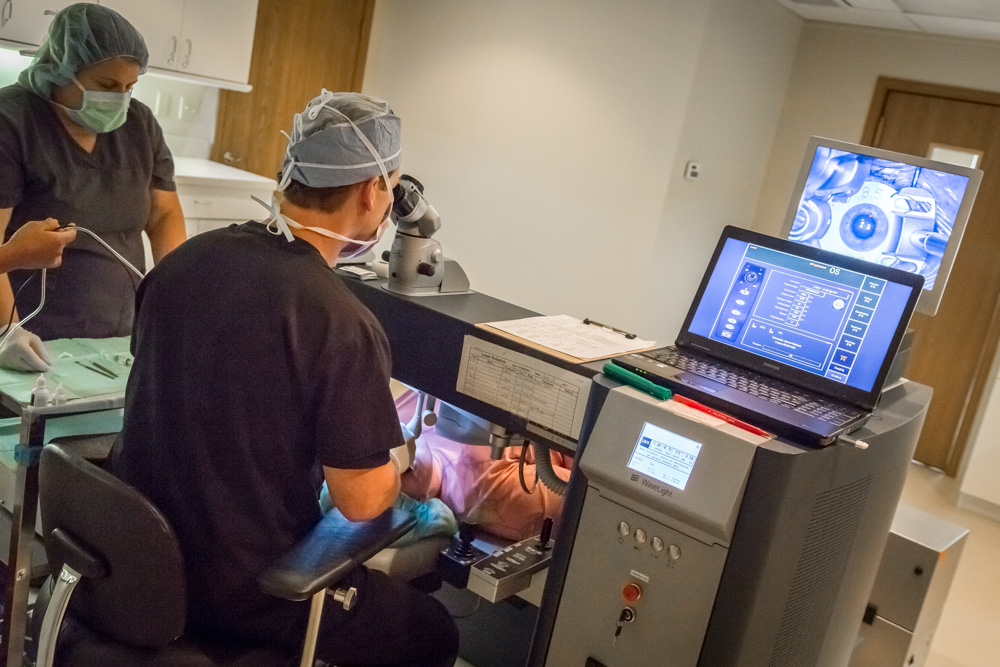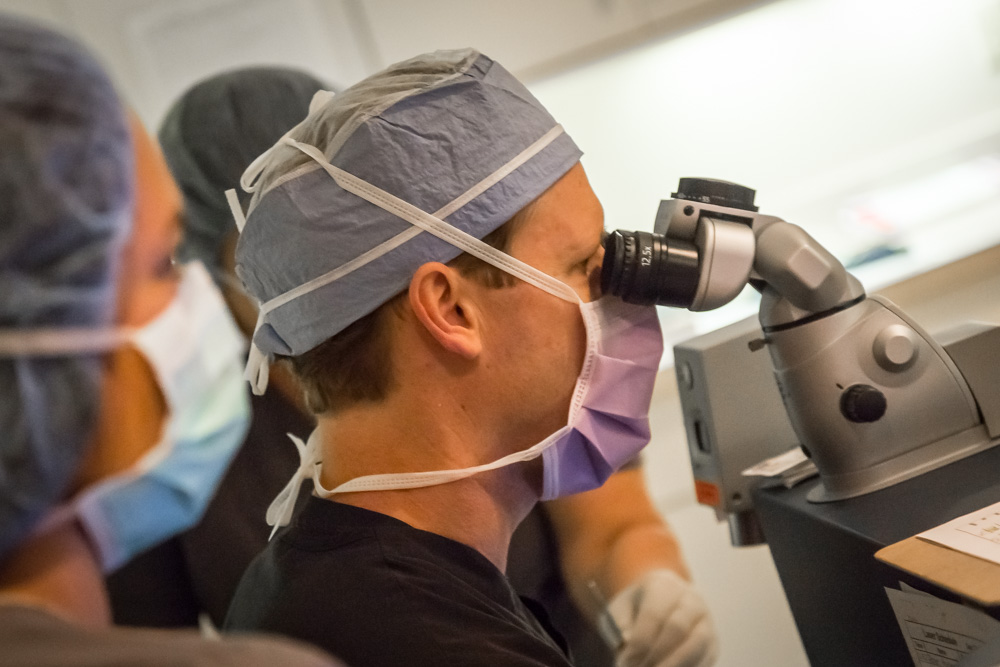For many people, the thought of having surgery is terrifying. So, My City Wellness has “scrubbed in” with talented local surgeons as they performed a variety of procedures – a peek behind the curtain, if you will. Our sincere thanks to doctors Michael Kia, MD; Mohmmed Margni, MD and Jeffrey Rohr, DO for their gracious cooperation in creating this ongoing special section.
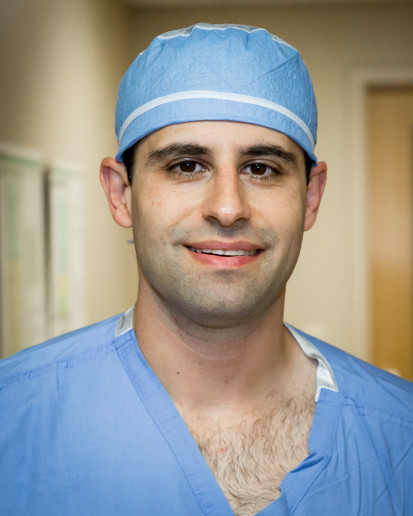 Dr. Michael Kia
Dr. Michael Kia
DO, FACOS, FACS
General and Bariatric Surgery Specialist
CREDENTIALS: A board certified general surgeon, Dr. Michael Kia has fellowship training in minimally invasive and robotic surgery and completed his fellowship in advanced laparoscopic and robotic surgery at the world-renowned University of Texas in Houston. He received his B.S. from the University of Michigan, his medical degree from Touro University in San Francisco, and performed his residency in general surgery through Michigan State University. Dr. Kia is an Associate Clinical Professor of surgery at MSU and a Fellow of the American College of Osteopathic Surgeons.
Dr. Kia specializes in advanced laparoscopic surgery of the gastrointestinal tract and abdomen and has pioneered the technique of single-incision surgery, serving as a national and international proctor. He has been recognized with numerous surgical awards and patents for his contributions to advancing surgery, and is the recipient of numerous patient satisfaction awards for his care and compassion.
PROCEDURE: Laparoscopic Sleeve Gastrectomy
FACILITY: McLaren Flint
Candidates for this procedure are typically morbidly obese, or have a body mass index of 40 or higher, or have a body mass index of 35-39.9 with one or more severe medical conditions related to morbid obesity, such as high cholesterol, hypertension, heart disease, stroke, sleep apnea, fatty liver disease or Type 2 diabetes.
The most significant benefits of this procedure include improvements in overall health, with significant reduction in weight and potential resolution of diabetes and hypertension, decreased rates of cancer and heart disease, as well as improvements in survival. Laparoscopic surgery allows for rapid recovery and early return to work/life.
A person considering this surgery should be aware that it is part of a comprehensive program focusing on lifestyle changes that improve overall health. Following a two-day hospitalization, a 7-10-day recovery time is typical, with a return to work in about two weeks.
Dr. Michael Kia has performed this procedure nearly 500 times, with a very high success rate.
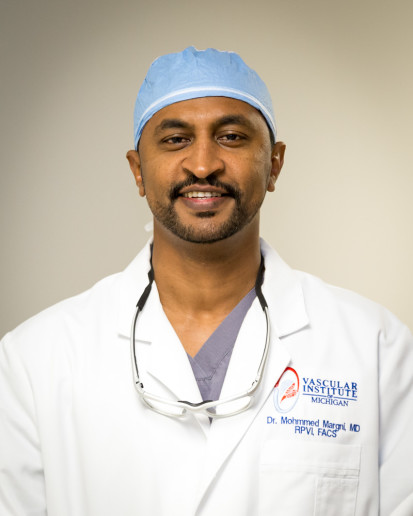 Dr Mohmmed Margni
Dr Mohmmed Margni
MD, FACS, RPVI
Vascular Surgeon
CREDENTIALS: Trained at Cleveland Clinic in Cleveland, Ohio
Dr. Mohmmed Margni received his medical degree from University of Khartoum Faculty of Medicine. He was in Flint during his medical training in 2005, for a general surgery internship at Hurley Medical Center (HMC), and returned to Flint in 2012 as chief of vascular surgery at HMC. A proponent of limb salvage and preservation, Dr. Margni went into private practice in June of 2015 and practices at the Vascular Institute of Michigan Flint and Lapeer locations. He also holds privileges at HMC.
PROCEDURE: Laser Ablation for Varicose Veins
FACILITY: Vascular Institute of Michigan, Flint
The most significant benefit of laser vein treatment is that it delivers a light energy to the targeted tissue with extreme precision, so as not to affect the surrounding tissue. Lasers have proven their safety and effectiveness through years of use in all types of medical procedures, from eye surgery to dermatology. In the hands of a skilled physician, lasers offer far less risk for complications than conventional surgery.
Under a variety of circumstances, normally toned, elastic vein walls can become weak and allow the recirculating blood that should be moving toward your heart to flow backwards. One-way valves in these veins – which open and enable blood to flow through on its way upward, then close to stop blood from flowing backward – can also fail to function properly. This allows blood to pool and pressure to build up, which further weakens and subsequently damages the veins, causing them to become twisted, enlarged and painful. Up to 40% of women and 25% of men are affected by this condition.
This is a minimally invasive procedure to treat symptomatic varicose veins, performed in a physician’s office or clinic. A laser fiber is advanced through the skin incision into the insufficient vein, and then heats the lining of the affected vein, causing it to shrink, collapse and eventually disappear. This technique is used to treat large varicose veins and is not suitable for spider veins.
The procedure takes approximately 45 minutes to one hour. There is typically a 15-minute post-procedure recovery time, and patients can resume normal activity the same day, unless advised otherwise by the surgeon. Upon the doctor’s instruction to remove the bandage from the site, the patient can wear their compression stockings as they normally would. Walking is encouraged.
Dr. Margni has performed this procedure hundreds of times. The fact that results can be immediate makes the Laser Ablation technology more efficient and effective. Published clinical studies show that the procedure has a more than 95% initial success rate with excellent long-term results.
For more information, visit vascularim.com.
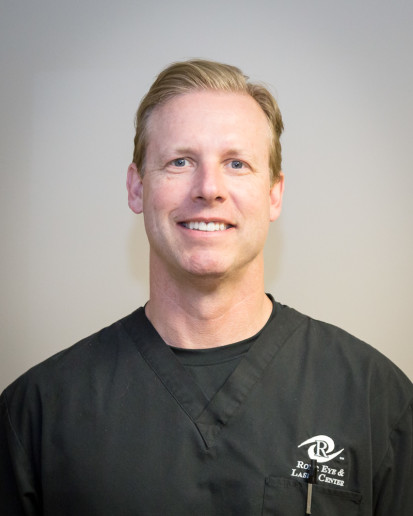 Jeffrey S. Rohr, DO
Jeffrey S. Rohr, DO
Ophthalmologist
CREDENTIALS: Dr. Rohr is the Medical Director and Chief Surgeon of the Rohr Eye & Laser Center. Jeffrey Rohr, DO, obtained his undergraduate degree in biology from Michigan State University. He completed his medical school training at the Des Moines University School of Medicine and his ophthalmology residency at the Genesys Regional Medical Center. He is one of the few elite eye surgeons in the nation who is Fellowship Trained in Advanced Cataract and LASIK Surgery, and is board-certified by the American Osteopathic Board of Ophthalmology. Dr. Rohr has been honored with the NRCC 2005 Physician of the Year Award, SightPath Medical – Top Cataract Surgeon 2012 and 2013, among others. He is Assistant Clinical Professor, Department of Neurology and Ophthalmology, MSU, and has lectured to numerous ophthalmic surgeons about advances in refractive surgery.
PROCEDURE: LASIK (Laser Assisted In-Situ Keratomileusis)
FACILITY: Rohr Eye & Laser Center, Grand Blanc
LASIK is the procedure of choice for those people requiring vision correction for nearsightedness, farsightedness and/or astigmatism. Quick, safe and painless, the procedure typically allows people to no longer require corrective lenses for distance vision, and to dramatically improve their quality of life. The duration of most laser treatments is approximately ten seconds per eye.
For over ten years, Rohr Eye & Laser Center has offered the area’s only laser that is 100 percent owned and does not travel between facilities. Dr. Rohr’s laser stays in its own temperature/humidity controlled room and is calibrated before every patient treatment. Furthermore, his excimer laser actively tracks eye movement and verifies location before releasing pulses, ensuring well-centered treatments.
In 2016, Dr. Rohr took the next step in LASIK and purchased an innovative, FDA approved technology called WaveLight® Allegretto Eye-Q excimer laser. This technology has the ability to create a “map” of the eye to capture its unique features, a major advantage over earlier LASIK procedures. Mapping enables customization of the procedure in order to achieve the best results.
According to WedMD, “No medical procedure is without risks, and complications can happen in fewer than one in 20 laser eye operations. One in three people will still need glasses some of the time after laser eye surgery, such as for night driving.”
Dr. Rohr is one of the few elite eye surgeons in the nation that is Fellowship trained at the prestigious Colorado Eye Institute in both Cataract and LASIK surgery. He has performed in excess of 10,000 refractive procedures.
After LASIK, patients should plan to go home and rest with their eyes closed as much as possible. A driver is required on the day of the procedure. Recovery is quick, and most patients return to work the next day.
No results are guaranteed; however, according to Dr. Rohr, “less than one percent of my patients require a fine-tuning of their procedure at some point, far less than the national average.”
Photography by Eric Dutro

